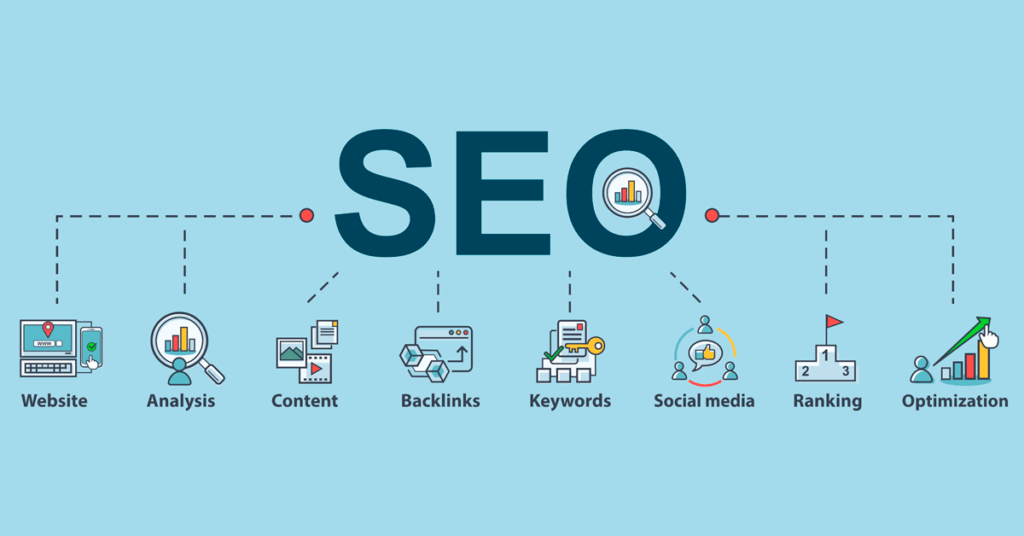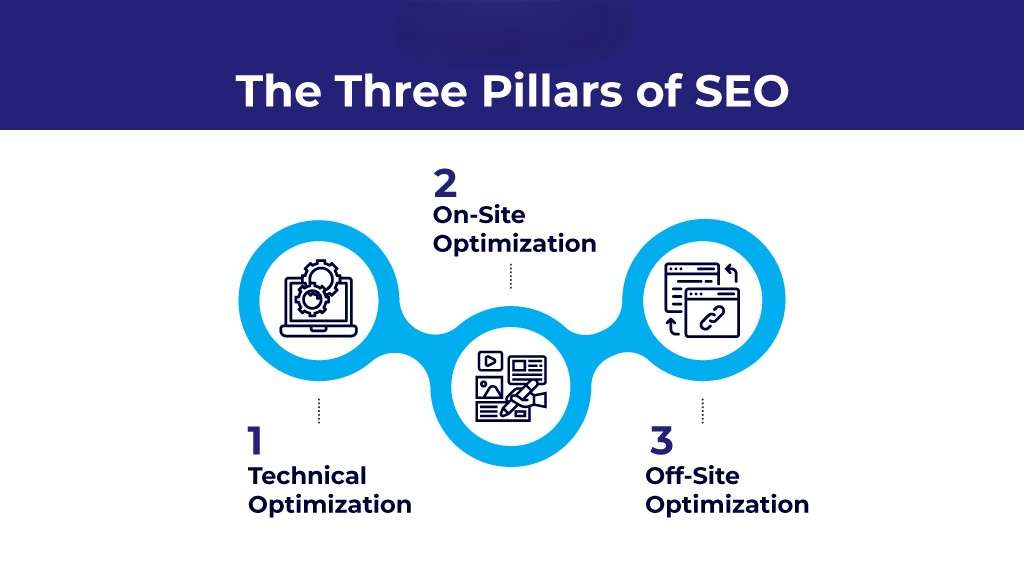
Search Engine Optimization

What is Search Engine Optimization
SEO stands for ‘Search Engine Optimization’, which is the process of getting traffic from free, organic, editorial, or natural search results in search engines. It aims to improve your website’s position in search results pages (SERPs).
The Three Pillars of SEO
On-page SEO: Anything you do with website content to improve rankings, such as using relevant keywords.
Off-page SEO: Anything you do outside of your website to improve rankings, such as building backlinks.
Technical SEO: Anything you do on the technical side of things, such as improving page speed.


SEO Benefits
- Brings Organic Search Traffic to your Website
- Generates Leads Cost-Effectively
- Increases Brand Awareness
- Gets you Ahead of the Competition
- Optimizes Your Website for Mobile Users
- Builds Trust
- Improves All Your Other Marketing
SEO Strategy: How to Create an Effective Plan

The Following Steps are to create an SEO strategy
Step 01 # Create a List of Keywords
Step 02 # Analyze Google’s First Page
Step 03 # Identify your Competitors
Step 04 # Create Something Different or Better
Step 05 # Add a Hook
Step 06 # Optimize For On-Page SEO
Step 07 # Optimize for Search Intent
Step 08 # Focus on Content Design
Step 09 # Build Links to your Page
Step 10 # Improve and Update Your Content
How Search Engine Works
STEP # 01
Crawling
Crawling is the first step in the search engine process, where search engines discover new and updated content on the web. This is done using automated programs called crawlers or spiders. Here’s how it works: Discovery AND Sitemaps and Directives
STEP # 02
Indexing
Once the content is discovered, search engines process and store it in a vast database known as an index. This step involves: Content Analysis, Metadata and Tags AND Structured Data
STEP # 03
Ranking
Ranking is the process of determining the order in which web pages appear in search engine results pages (SERPs). Search engines use complex algorithms to evaluate and rank pages based on several factors: Relevance, Authority, User Experience, Freshness AND Engagement Metrics
STEP # 04
Retrieval
When a user enters a search query, the search engine retrieves relevant pages from its index and presents them in the form of search results. This involves: Query Parsing AND Results Presentation
STEP # 05
Continuous Improvement
Search engines continuously refine their algorithms to improve search accuracy and user satisfaction. This involves: Algorithm Updates, Machine Learning AND User Feedback
